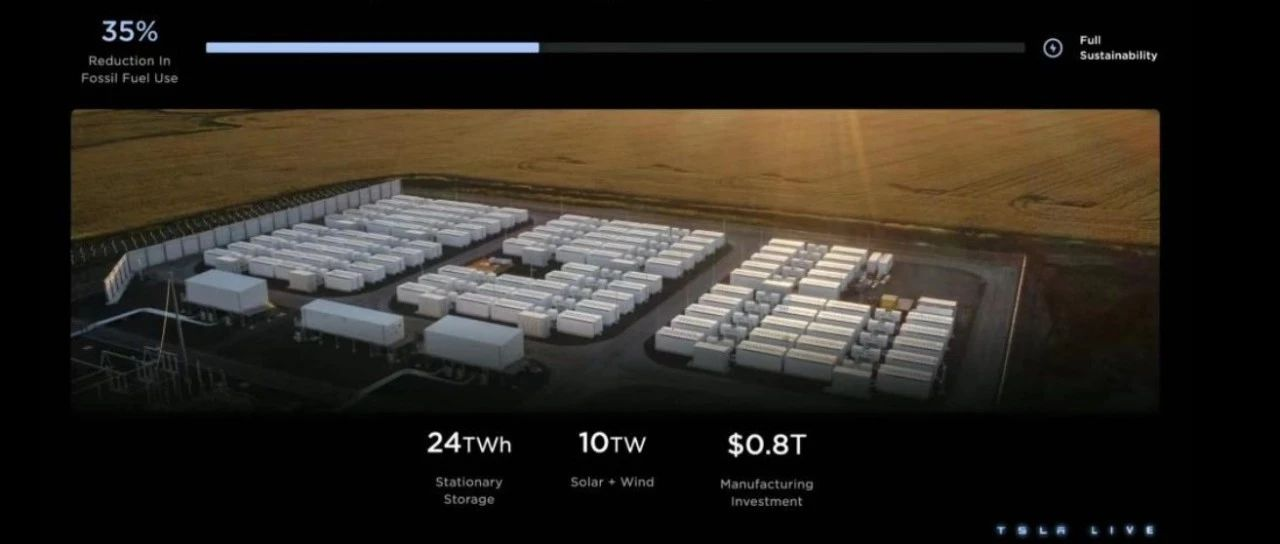Introduction: Disappointing Event
Tesla’s events, including Battery Day and AI Day, always offer great insights and thoughts. However, the Tesla Investor Day on March 1st, which also marked the release of Master Plan, the third chapter by Musk after years of waiting, left many feeling unsatisfied.
The main problem here is that Tesla has many aspirations but hasn’t been able to execute them well in the highly competitive field. They merely provided prospects on:
-
Renewable power grid: supplying the existing grid with renewable energy to reduce fossil fuel usage by 35%, requiring 24 TWh of energy storage combined with 10TW of wind and solar, and an investment of $800 billion;
-
Development of large-scale electric vehicles: reducing fossil fuel usage by 21%, with 115TWh of energy storage paired with 4TW of wind and solar, and an investment of $7 trillion USD;
-
Heat pumps: home and industrial heating through heat pumps to reduce fossil fuel usage by 22%, requiring 6TWh of energy storage combined with 5TW of wind and solar, and an investment of $300 billion;
-
High temperature heating and hydrogen energy: reducing fossil fuel usage by 17%, with 48TWh of energy storage paired with 6TW of wind and solar, and an investment of $800 billion;
-
Sustainable fuels for airplanes and ships: this is farther from our reach.
These grand plans by Tesla are still far away from what we would like to see. Today, we focus on interpreting three areas that are most practical: electric vehicles, energy storage, and charging.
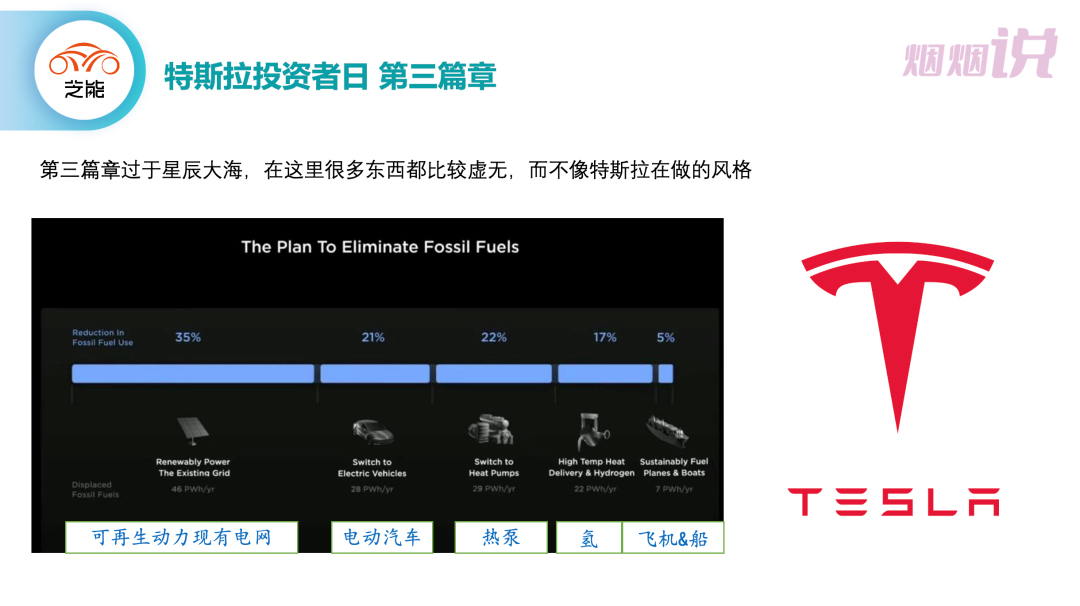
Tesla’s Next Generation of Electric Vehicles
Reiterating the Grand Vision
Cheap electric vehicles can create the foundation for Musk’s sustainable development energy at scale. Tesla offers a new interpretation of their previous groundbreaking electric vehicle effort, the numbers are exaggerated: a total of 115 TWh is required for power and storage batteries, producing 20 million electric cars every year, globally totaling 85 million electric car fleets, which require an investment of $7 trillion USD.“`
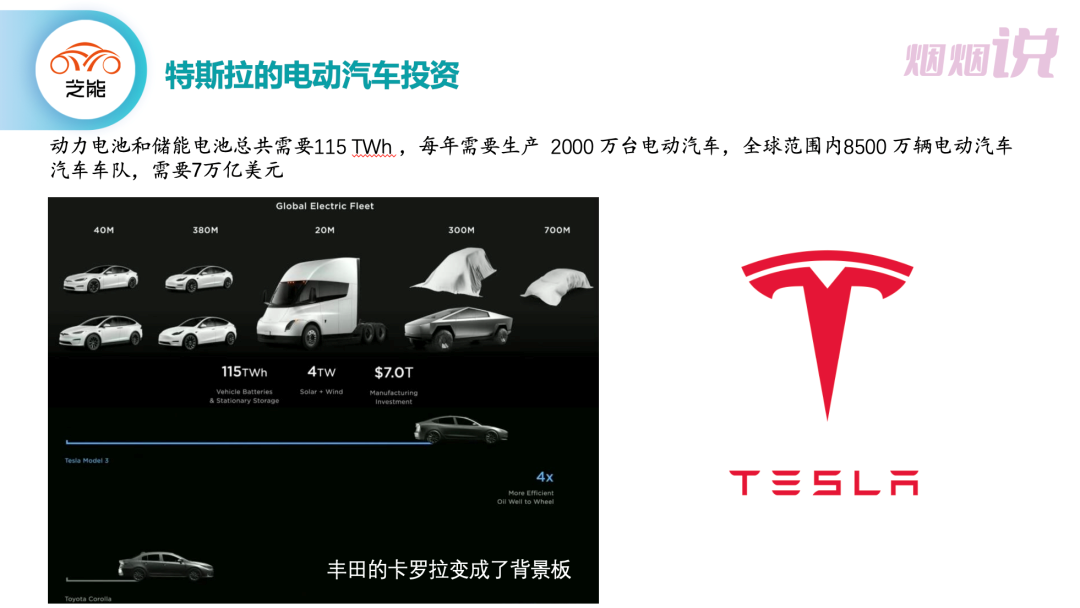
Tesla believes that, unlike us who mainly consider sodium-ion batteries as a substitute for lithium-ion batteries, lithium resources are abundant worldwide and the bottleneck currently lies in how to obtain carbonate. Therefore, Tesla will also spend time considering how to refine lithium. The key constraint in the future will come from the production capacity of purifying lithium elements, not from discovering lithium resources. Therefore, broadly speaking, Tesla is still focused on lithium-ion batteries, even if it is up to 115TWh.
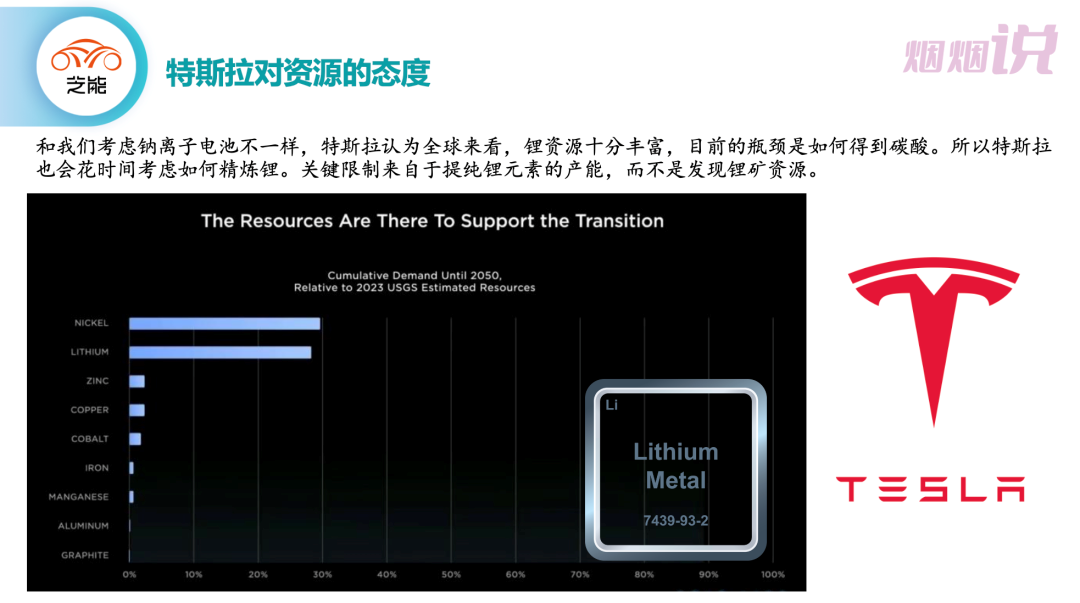
While lithium mines are being sought worldwide, the incremental amount of lithium resources is much larger than we imagined, so this does make us more optimistic about the future of lithium-ion batteries. Of course, this conclusion does not hold true for China’s current situation. Currently, the sources of domestic lithium resources are limited to several areas in Jiangxi, Sichuan, Qinghai, and Tibet. We may need to look for solutions globally, such as in South America and Africa.
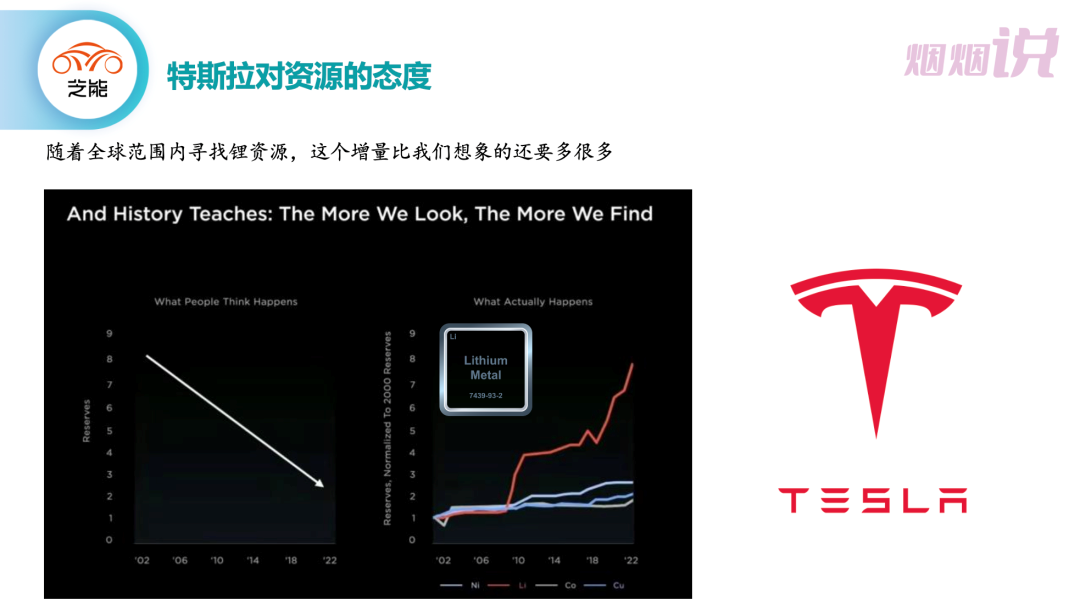
The Path to Cost Reduction for Next-Generation Vehicles
Tesla expects to reduce costs by 50% in three areas: volume production of complete vehicles, drivetrain, and production manufacturing. This also includes thinking about product development progress, engineering changes, and lower procurement costs.
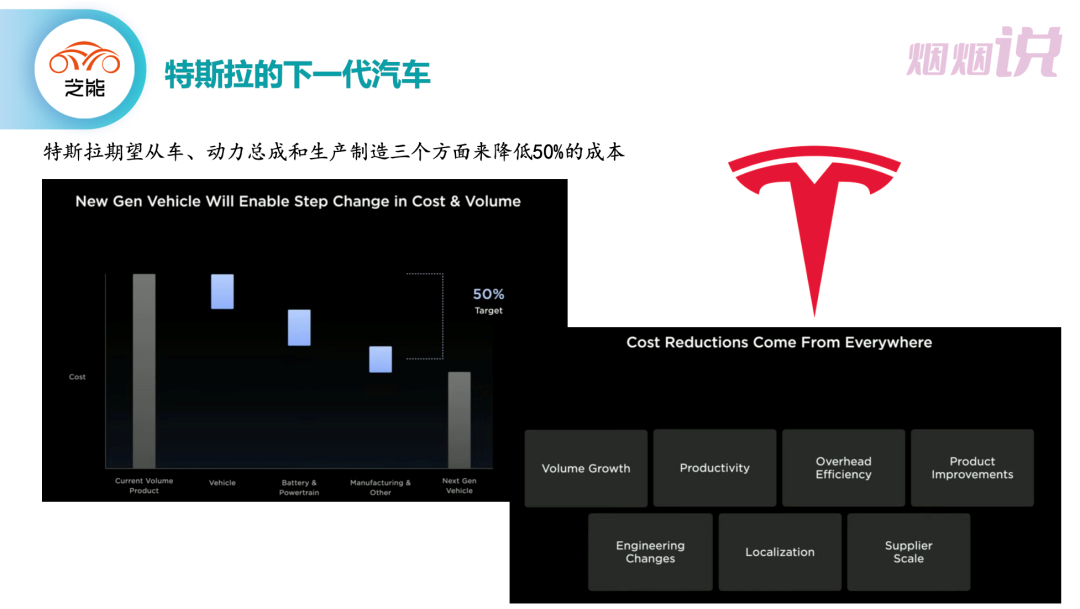
◎ Production Process
From Tesla’s perspective, starting with the Model Y, the assembly mode will modernize, reducing the number of parts and achieving integrated die casting. After the introduction of CTC, the battery pack will be used as the floor of the car body, and the seat will be assembled on the battery pack to reduce the operating process. Sequential and parallel assembly will be combined to achieve one-time assembly. At the same time, different parts of the car will be assembled from the front, back, left, and right to increase production efficiency by 30% from the perspective of time and space, enhance automation, reduce the production area by 40%, and significantly reduce the capital expenditure and cost of each car.“`
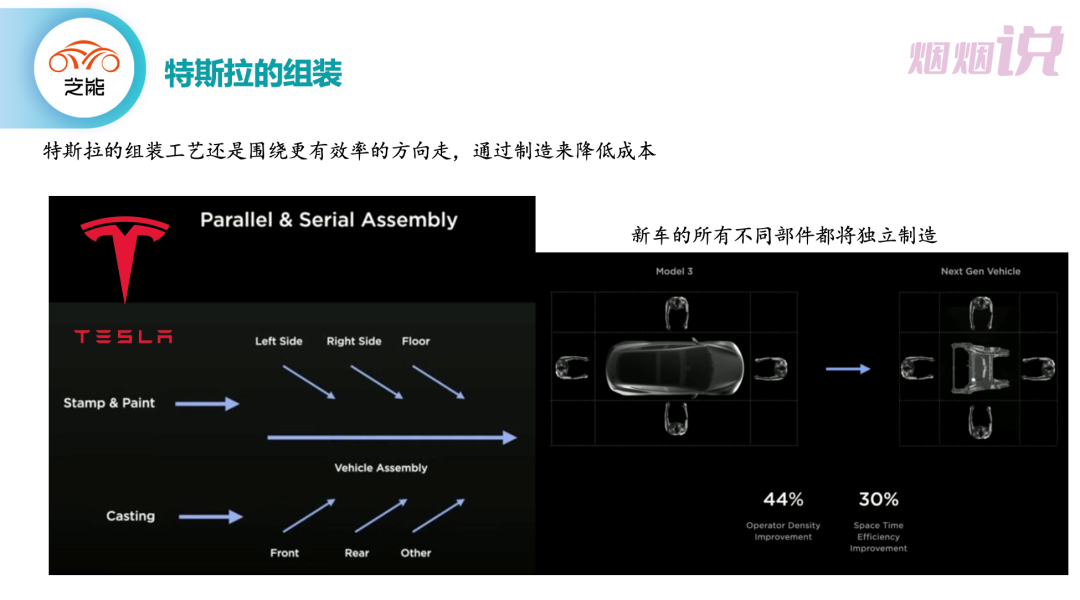
◎ Powertrain and EE Design
Tesla’s powertrain also gave us a big shock:
First of all, the next-generation platform will reduce 75% of silicon carbide.
Tesla has found a combination of SiC and traditional IGBT that can reduce usage by 75%, and has lowered the cost by $1,000 by being compatible with different batteries. In addition, rare-earth-free motors will be used in the motor, which is actually a method that Japanese and German car companies have been trying for many years to scale up.

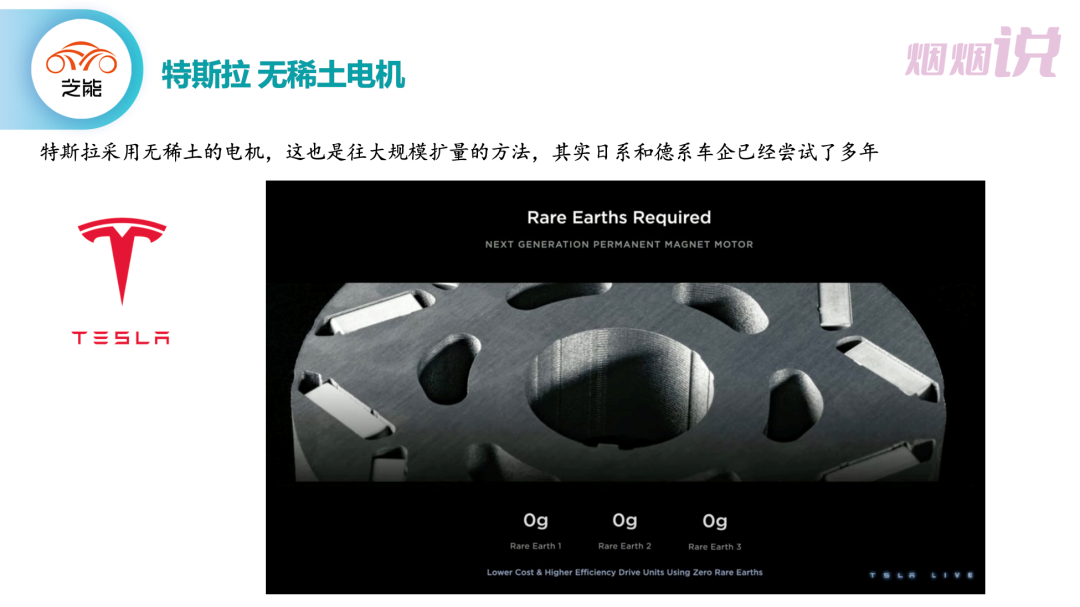
Battery use is also based on various different chemical systems and produced in Fremont, Texas, Nevada, and the new 4680 production line, which reduces capital expenditures through compact integration.
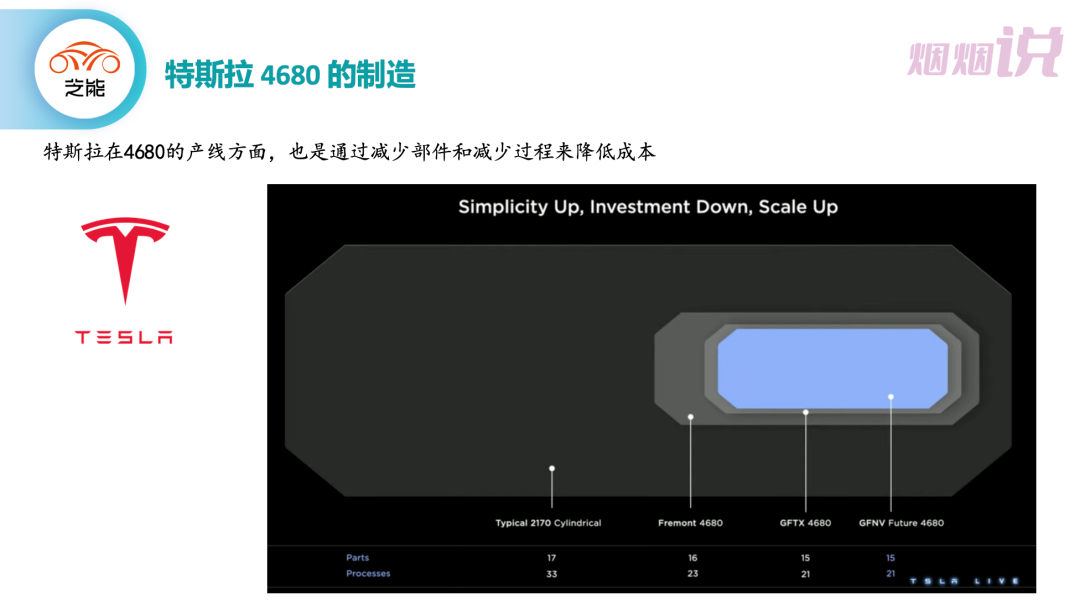
Secondly, Cyber truck’s self-designed controller.
85% of the Cyber Truck’s controllers are designed by Tesla and will gradually increase to 100%. Independent design can greatly reduce the constraints of the parts supply chain, especially after importing the 48V architecture, the entire ECU is new. We will explore this further in the future. The biggest advantage of the 48V architecture is that it can make the entire vehicle harness narrower, thereby reducing the power consumption of the overall low-voltage system.

Although there was a shocking impact on the market, the overall details of the next-generation electric vehicles were not discussed much at the conference, and more talks were focused on directional content. The appearance of the next-generation platform has aroused great curiosity.
## Tesla's Energy Storage and Charging Systems
Surprisingly, energy storage was the highlight of this conference, with annual demand for Megapacks exceeding 100GWh starting from 2023, and increasing demand in the future.
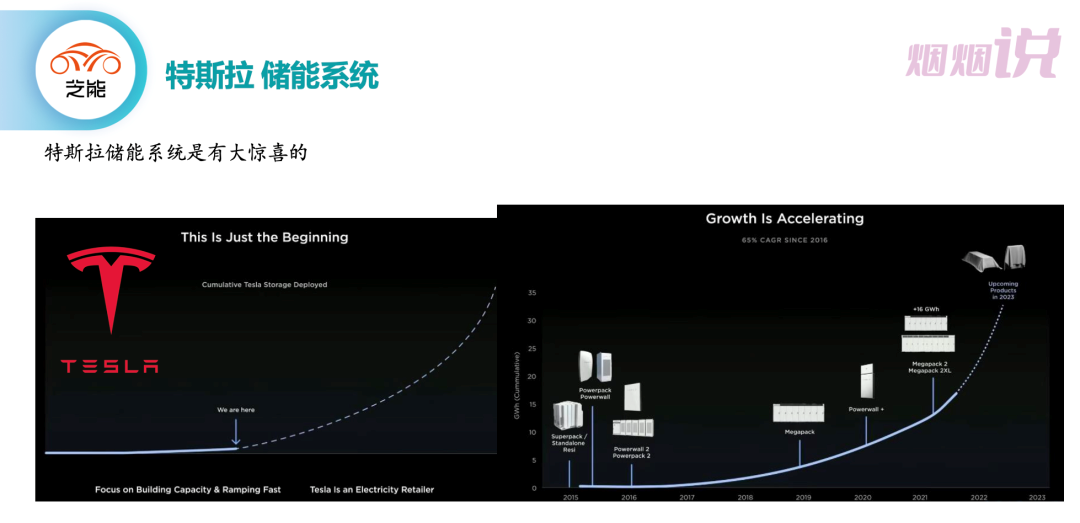
In terms of charging network construction, Tesla has started to open it up to other automakers, so it plans to increase the convenience of roadside charging in the United States by adding 80,000 charging poles starting in 2023. In addition, since Tesla designed its own charging poles and systems, it believes that the cost of deploying charging poles worldwide is the lowest, reducing hardware and infrastructure deployment costs for supercharging by 20% compared to its competitors.
Tesla has also made a lot of efforts in charging design. During supercharging, different charging poles are set up according to different locations. Real-time data can be obtained through real-time scheduling and applied to vehicle and charging pole matching scenarios, achieving a 40% reduction in cost per kilowatt-hour. In addition, big data can be used to improve site utilization, saving 30% charging time.
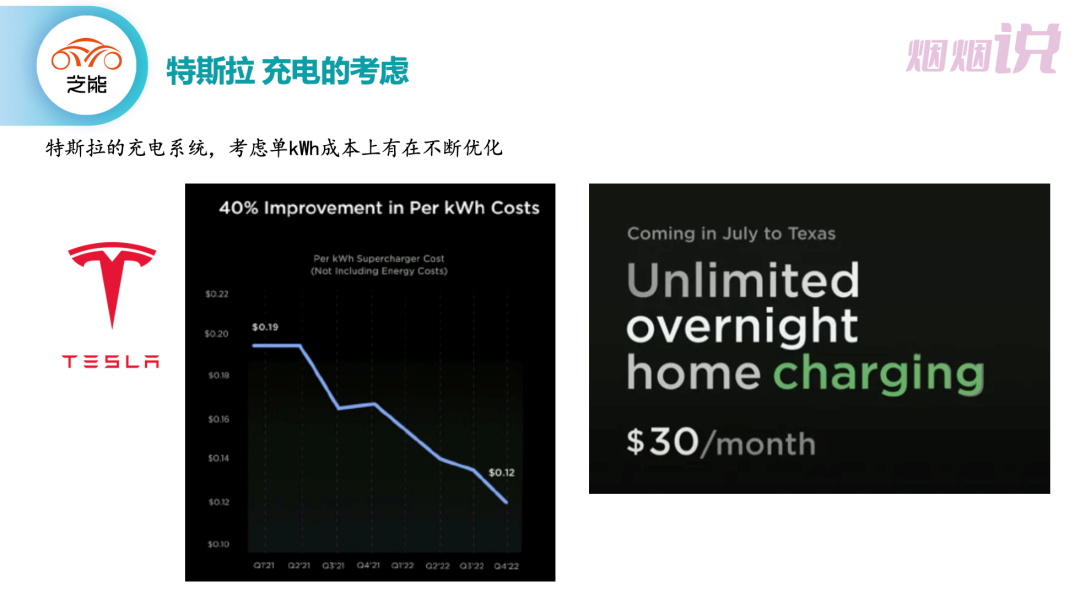
**Conclusion: To be honest, there wasn't much valuable information at this Investor Day. When presenting to investors, it has to be a grand vision rather than any actual action plan. To see the truth, we still need to wait for Battery Day and AI Day, which are worth looking forward to. After reading this, we only confirmed once again that Tesla's grand vision is far more than just selling cars.**
# 这是一个标题
这是一段普通的文本,<span style="color:red;">但是可以使用 HTML 标签</span>,比如这里的 <code>span</code> 标签给文本添加了红色的颜色。
接下来是一段代码
javascript
console.log(‘Hello World!’)
“`
接着是一个列表
- 列表项 1
- 列表项 2
- 列表项 3
还可以嵌套一个有序列表
- 有序列表项 1
- 有序列表项 2
- 有序列表项 3
接下来是一个图片

最后是一个链接
This article is a translation by ChatGPT of a Chinese report from 42HOW. If you have any questions about it, please email bd@42how.com.
